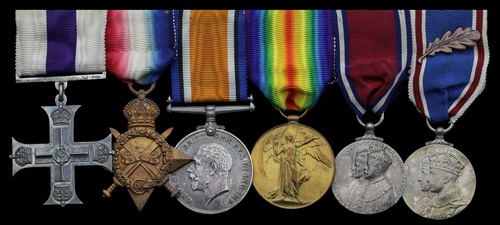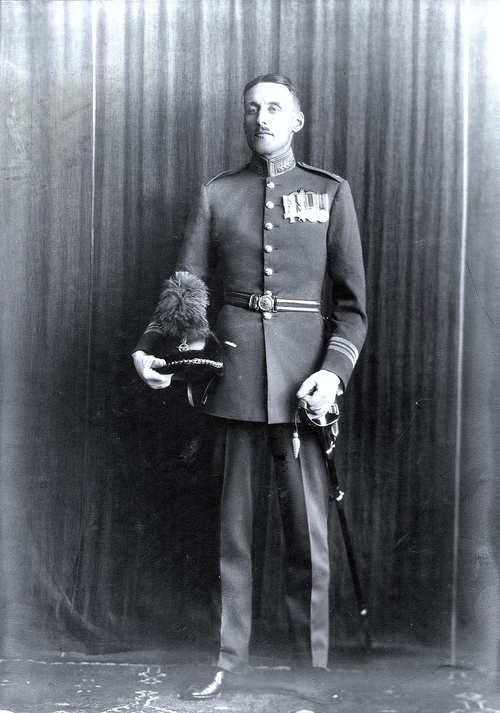Auction: 19003 - Orders, Decorations and Medals
Lot: 395
Sold by Order of a Direct Descendant
A Great War pilot's M.C. group of six awarded to Group Captain L. T. N. Gould, Royal Air Force, late Royal Garrison Artillery and Royal Flying Corps, who having been wounded in action and had a confirmed 'kill', commanded No. 21 Squadron in France from July 1917 until September 1918
Military Cross, G.V.R., unnamed as issued; 1914-15 Star (2 Lieut. L. T. N. Gould, R.G.A.); British War and Victory Medals (Major L. T. N. Gould, R.A.F.); Jubilee 1935; Coronation 1937, mounted as worn, together with 1939-45 M.I.D. oak leaf, very fine or better (6)
M.C. London Gazette 18 July 1917:
'He has done consistent, good and valuable work while co-operating with the artillery, often under most difficult conditions. He always sets a splendid example by his exceptional pluck and determination.
Lionel Thomas Nutcombe Gould was born in Alveston, near Stratford-on-Avon, on 22 November 1893 and was educated at Marlborough College.
Commissioned in the Royal Garrison Artillery direct from the Royal Military Academy Woolwich in December 1913, he was embarked for France with the Royal Garrison Artillery in February 1915. He was wounded on 4 July 1915.
Seconded to the Royal Flying Corps as an Observer later in the same year, he qualified as a pilot in March 1916 (Certificate No. 2623) and served initially with No. 23 Squadron. It was on 28 July, whilst flying FE2b '6974' and flying with 2nd Class Air Mechanic F. Collinson as his Observer, that Gould was wounded in the air by shrapnel whilst escorting a formation of bombers from No. 8 & 12 Squadron attempting to bomb the railway at Aubiny-au-Bac. Recovered from his wounds and in the air with No. 16 Squadron by 15 September, it was on that very same day he attacked no less than eleven enemy machines over Bapaume, being confirmed as having 'downed' one. He was awarded the M.C.
In July 1917, Gould assumed command of No. 21 Squadron, a unit described by General Trenchard as 'the best artillery squadron in France'. And he remained likewise employed until September 1918.
Gould's subsequent postings between the wars included tours of duty in Baghdad and India in the 1920s and, following his advancement to Wing Commander, he served at the Air Ministry in the early 30s. Having then commanded 502 (Ulster) Squadron, a heavy bomber unit based at R.A.F. Aldergrove, Belfast (1932-33), he was promoted to Group Captain and took command of the School of Naval Co-operation at Lee-on-Solent (1934-35).
He was at Coastal Command from 1936 and likewise employed on the renewal of hostilities in September 1939, services that gained him a mention in despatches (London Gazette 10 March 1940, refers). An appointment at R.A.F. Cranwell followed and in 1942 he moved to the flying training establishment at R.A.F. Penrhos; his son, Auriol Stephen Nutcombe Gould, was killed piloting a Hawker Typhoon of No. 197 Squadron in January 1943.
Placed on the Retired List at the war's end, the Group Captain died in tragic circumstances in January 1947, whilst visiting his brother, Commander J. C. Gould, R.N., at Radlett, Hertfordshire. He was found dead in a gas-filled room; it was suggested that a gas pipe had become disconnected as he tried to light the fire.
He was buried in Fulbeck Churchyard, Lincolnshire.
Subject to 20% VAT on Buyer’s Premium. For more information please view Terms and Conditions for Buyers.
Sold for
£2,700
Starting price
£1000







